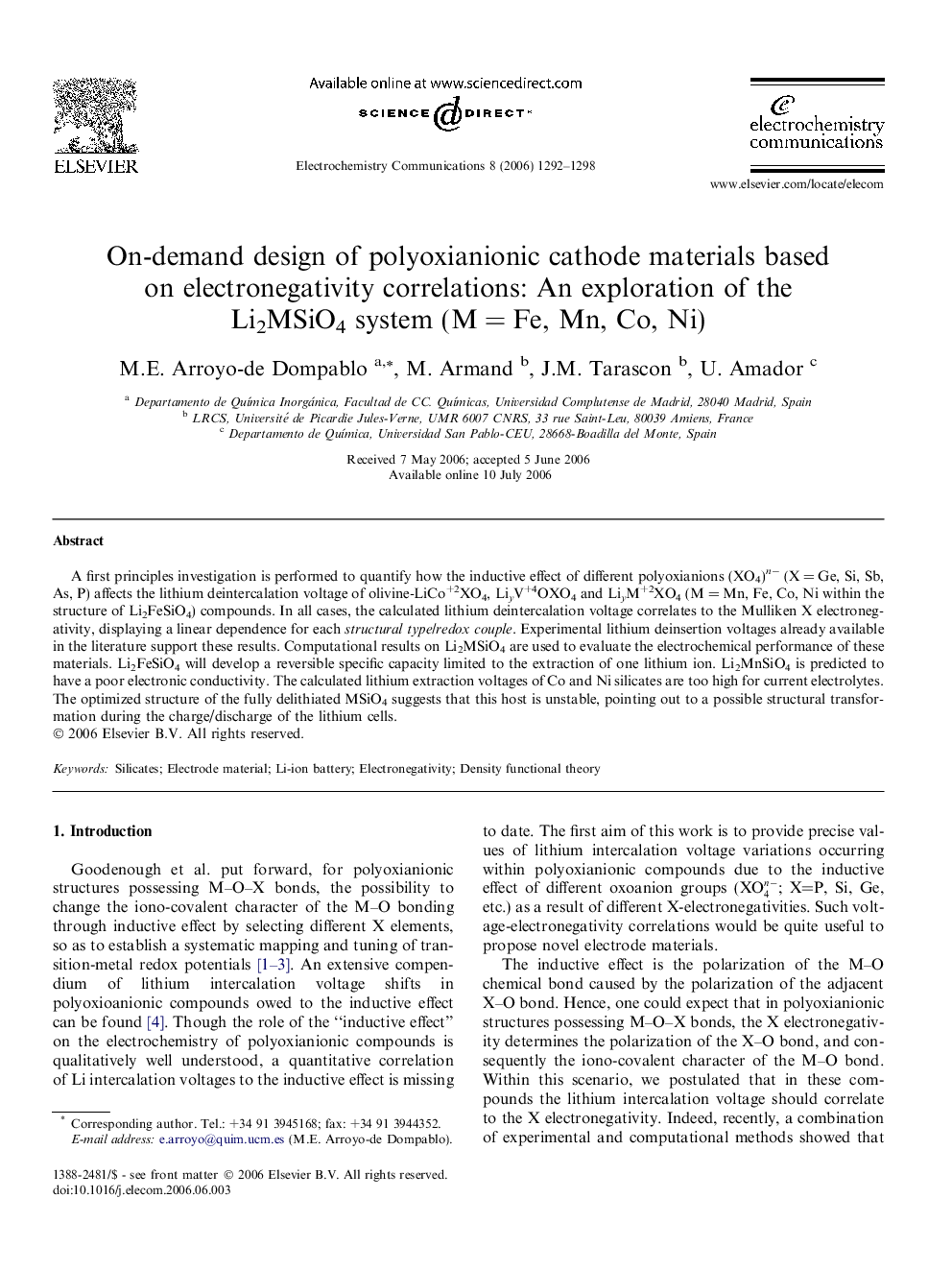| Article ID | Journal | Published Year | Pages | File Type |
|---|---|---|---|---|
| 182605 | Electrochemistry Communications | 2006 | 7 Pages |
A first principles investigation is performed to quantify how the inductive effect of different polyoxianions (XO4)n− (X = Ge, Si, Sb, As, P) affects the lithium deintercalation voltage of olivine-LiCo+2XO4, LiyV+4OXO4 and LiyM+2XO4 (M = Mn, Fe, Co, Ni within the structure of Li2FeSiO4) compounds. In all cases, the calculated lithium deintercalation voltage correlates to the Mulliken X electronegativity, displaying a linear dependence for each structural type/redox couple. Experimental lithium deinsertion voltages already available in the literature support these results. Computational results on Li2MSiO4 are used to evaluate the electrochemical performance of these materials. Li2FeSiO4 will develop a reversible specific capacity limited to the extraction of one lithium ion. Li2MnSiO4 is predicted to have a poor electronic conductivity. The calculated lithium extraction voltages of Co and Ni silicates are too high for current electrolytes. The optimized structure of the fully delithiated MSiO4 suggests that this host is unstable, pointing out to a possible structural transformation during the charge/discharge of the lithium cells.
